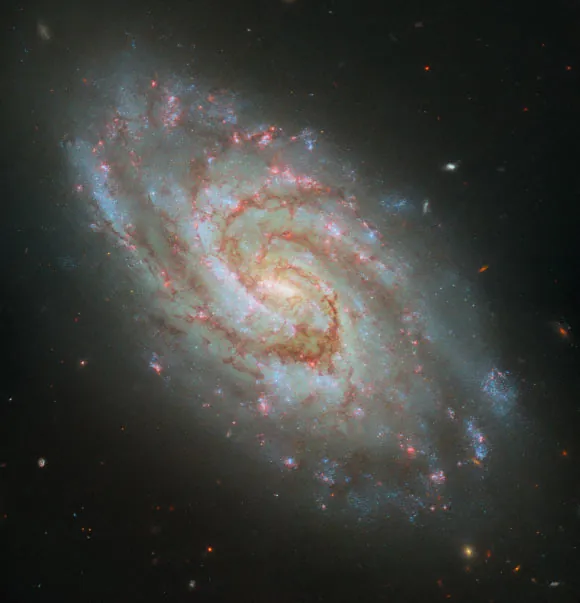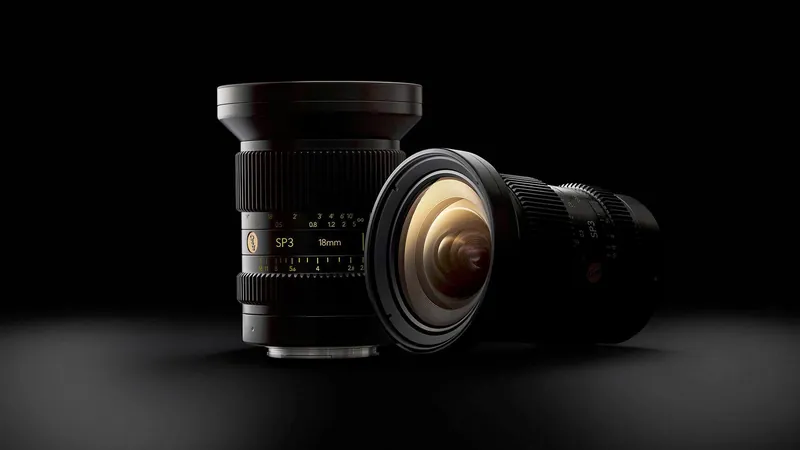
Hubble Unveils Breathtaking Image of Spiral Galaxy IC 1954 with a Mysterious Central Bar
2024-09-23
Hubble Unveils Breathtaking Image of Spiral Galaxy IC 1954 with a Mysterious Central Bar
The Hubble Space Telescope has once again astonished the world with a mesmerizing image of the barred spiral galaxy IC 1954, located approximately 45 million light-years away from Earth in the southern constellation of Horologium.
Discovered in 1898 by the renowned Scottish astronomer Robert Innes, IC 1954—also known as ESO 200-36, IRAS 03300-5204, or LEDA 13090—spans a diameter of around 20,000 light-years. This relatively small galaxy features an eye-catching bright central bar and elegantly winding spiral arms interspersed with dark dust clouds.
In a unique cosmic companionship, IC 1954 is part of the LGG 93 galaxy group, colloquially known as the IC 1954 group, sharing its celestial neighborhood with four other galaxies.
Hubble astronomers described IC 1954 as 'sporting a glowing bar in its core' and noted that it boasts 'two main majestically winding spiral arms and clouds of dark dust across it.' The latest image builds upon a previous photograph released by Hubble in 2021, incorporating new H-alpha data. This enhancement reveals vibrant clusters of star-forming nebulae—active regions emitting red H-alpha light—that manifest as glowing pink spots throughout the galaxy's disk.
Intriguingly, some astronomers speculate that the glowing 'bar' could be an energetic star-forming region positioned directly over the galactic center. This insight opens new avenues for understanding star formation processes within galaxies.
The stunning color image of IC 1954 was captured using Hubble’s Wide Field Camera 3 (WFC3), employing six different filters to explore various wavelengths across the visible, ultraviolet, and near-infrared spectrum. The resultant colors are created by assigning distinct hues to each individual monochromatic image, highlighting the galaxy's intricate features.
To expand their knowledge, astronomers are currently engaging in a comprehensive survey of IC 1954 alongside over fifty other nearby galaxies, using radio, infrared, optical, and ultraviolet light. This ambitious project seeks to trace the trajectory of matter across stars, interstellar gas, and dust within each galaxy.
Hubble plays a pivotal role in this investigative effort; its abilities to capture the brightest young stars and clusters in ultraviolet and optical wavelengths, combined with its effective H-alpha filter, make it an invaluable tool for tracking emissions from nebulae.
The data compiled from this extensive survey is expected to unlock a wealth of information about the evolution of stars within galaxies. As researchers continue their work, the insights gained from Hubble will serve as a crucial foundation for future scientific explorations, including those conducted by the groundbreaking NASA/ESA/CSA James Webb Space Telescope.
Stay tuned as we await further revelations from the universe that could redefine our understanding of cosmic structures!



 Brasil (PT)
Brasil (PT)
 Canada (EN)
Canada (EN)
 Chile (ES)
Chile (ES)
 España (ES)
España (ES)
 France (FR)
France (FR)
 Hong Kong (EN)
Hong Kong (EN)
 Italia (IT)
Italia (IT)
 日本 (JA)
日本 (JA)
 Magyarország (HU)
Magyarország (HU)
 Norge (NO)
Norge (NO)
 Polska (PL)
Polska (PL)
 Schweiz (DE)
Schweiz (DE)
 Singapore (EN)
Singapore (EN)
 Sverige (SV)
Sverige (SV)
 Suomi (FI)
Suomi (FI)
 Türkiye (TR)
Türkiye (TR)